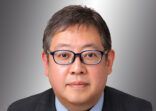Emerging markets are back in favour with investors, largely thanks to signs of economic and currency stabilisation seen in China, as well as the negative interest rate environment in Japan and Europe, and uncertainty about Brexit impact on the European Union.
The EM view is shared by 7IM, Old Mutual, as well as Manulife Asset Management’s head of international portfolio solutions group, who said some of the funds are adding exposure to Asia stocks, especially Greater China equities.
Against the backdrop, Germaine Share, Morningstar’s senior analyst who covers Greater China funds, provides a comparative analysis.
Investment Strategy

The GAM fund has a quality growth portfolio, which combines both top-down and bottom-up analysis.
“The fund first identifies the sectors which can generate the most growth. Once it identifies the sectors, you will see it have a very large exposure to those sectors.”
The fund has a long-standing bias toward domestic consumption, she noted, and recently it is more positive on the services and internet sectors.
Company visits are crucial to the process, and the portfolio manager, Michael Lai, sees the management of the companies in his portfolio at least twice a year, Share said.
The fund is also benchmark-agnostic, she noted. Active share, a measure of how far the fund deviates from a benchmark (in this case, MSCI China), is 71%.
By comparison, Blackrock’s active share stands at 47%.
For the Blackrock fund, the approach has turned more flexible since Andrew Swan, co-manager and head of Asian fundamental equities, started managing the fund in mid-2013, Share said.
“They will change the investment style depending on the market environment. Andrew will design the broad theme for the entire investment desk. He believes that in 2016 it will not look as bad as everyone thought, so he finds value opportunities.”
Before Swan took over the fund, the predecessor had a more value-focused approach, she added.
Currently, the fund has a preference for energy and material stocks amid the oil price drop and overcapacity issues, as Swan expects an oil price recovery and supply-side reform, she said. The other co-manager, Helen Zhu, will also contribute investment ideas, such as those which can benefit from China’s structural reforms.
The style-agnostic investment process combines both top-down and bottom-up analysis.
Performance

Swan’s strategy “has yet to be tested over a full market cycle on a single-country fund”, Share said.
In addition, Zhu, the co-manager, has managed the fund since she joined the firm in July 2014, a time period that does not reflect the management of a fund through a complete market cycle, she added.
Below are two charts, one for a fund performance comparison on a three-year basis and the other, the period since Helen Zhu started managing the Blackrock fund on 2 July 2014.
The Blackrock product outperformed the GAM fund on both time periods, according to FE data.
For the GAM fund, Share noted that sometimes when the invested sectors did not do well, it can suffer very heavily. An example would be in 2014, when the GAM fund was hit by a large exposure to Macau gaming stocks, which tanked during the period.
“[The fund] did not sell fast enough after facing a rally in 2013,” Share said. As a result, when the sector downturn came in 2014, “the fund lagged the index by a painful 1,334 basis points and ranked in the 92nd percentile among peers”.
Still, it rebounded strongly in 2015, beating the index by 1,143 basis points and ranked in the eighth percentile among peers.
The GAM fund “could have very volatile returns, but over the longer term it has proved to be able to generate solid returns for investors,” she noted.


















